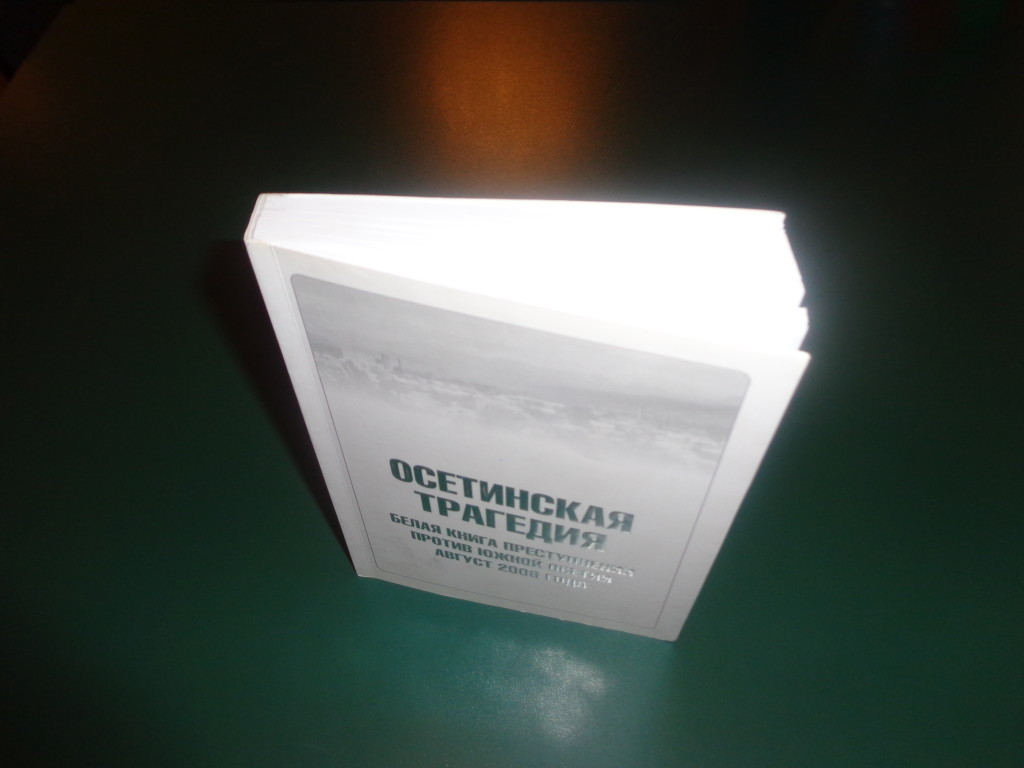“The tragedy of Oset. A white book on crimes against South Ossetia“was published by the “Yevropa” Press in Moscow in 2008. The “from draftsmen”section of book which was edited by Kiril Tanayev ,reads: “ This book does not only intends to identify the realities about 7-12 August events in South Ossetia. However, it is a documentared evidence of crimes committed by Georgian military forces in South Ossetia. Documents and stories told by participants and victims of the events were incorporated in the book. The book which was written on the basis of the investigation materials of the Russian Federation Prosecutor’s Investigation Committee also includes legal acts of government agencies of Georgea, Russia and South Ossetia.
In terms of the historical backround of the conflict, the author talks about the history of Georgia from ancient times to the late XVIII century and does not hesitate to misinterpret the facts.
The author who described Russian invasion of South Caucasus as a voluntary association with Russia states that in 1843, Ossetia was esatblished as a district within Tibilisi Region and was annexed to Qori Province in 1859 , then in Septmeber of 1921, Ossetia as a Soviet Socialist Republic entered into a federative alliance with Georgia on a voluntary basis.
The separatism in South Ossetia has been similar to that of Naqorno Karabakh and Dnestr scenarios.While stressing nonconformity of Georgea’s announcement of its independence in April 9 1991 with the Soviet laws, the author finds Soviet-Democratic Republic of South Ossetia’s act to declare its national sovereignty in September 20 1990 as logical.
K.Tanayev notes that as a result of the conflict, Ossetians massively moved to Northern Ossetia and residents of the Georgian villages left South Ossetia too. Interestingly, if Ossetians left South Ossetia en masse, then why Georgians had to leave their lands.
While providing a comprehensive information about Ossetians died in the period of conflict, the author does not touch upon the Georgeans losses. In general, a biased approach to the events, to show Southern Ossetians and Russia as fair but Georgians as an aggressor is a primary subject of the book. Even in the selections from foreign media the writings are available which are in conformity with Russia’s position. In the prosecutor’s office investigations, the names of witnesses are not indicated, only dates of birth and names of cities and villages they lived are enumerated.
Gunduz Nasibov,
1905.az











 Inauguration ceremony of President of Azerbaijan Ilham Aliyev was held
Inauguration ceremony of President of Azerbaijan Ilham Aliyev was held Ilham Aliyev wins presidential election with 92.05 percent of votes VIDEO
Ilham Aliyev wins presidential election with 92.05 percent of votes VIDEO President Ilham Aliyev, First Lady Mehriban Aliyeva and family members voted in Khankendi VIDEO
President Ilham Aliyev, First Lady Mehriban Aliyeva and family members voted in Khankendi VIDEO Plenary session of 6th Summit of Conference on Interaction and Confidence Building Measures in Asia gets underway in Astana. President Ilham Aliyev attends the plenary session VIDEO
Plenary session of 6th Summit of Conference on Interaction and Confidence Building Measures in Asia gets underway in Astana. President Ilham Aliyev attends the plenary session VIDEO President Ilham Aliyev was interviewed by Azerbaijani TV channels in Prague VIDEO
President Ilham Aliyev was interviewed by Azerbaijani TV channels in Prague VIDEO














